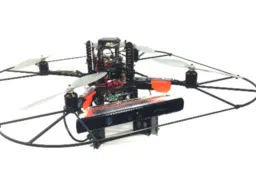
They’ve developed a unique air traffic simulator which produced these estimates. The UNSW sponsored research, which has been funded by the Australian Research Council and subsequently by AirServices Australia is now being trialled with the support of Eurocontrol (the European Organisation for the Safety of Air Navigation).
They hope the system will transform the management of airspace – saving fuel, reducing carbon emissions and reducing ground noise.
“Our system is the first in the world to integrate air traffic modelling with data and computations on aircraft noise and emissions,” says Sameer Alam who developed the system with the assistance of his colleagues at the University of New South Wales, campus located at the Australian Defence Force Academy in Canberra.
“It can simulate existing and advanced air traffic control procedures showing the resulting emission and noise patterns. In the future we expect that air traffic controllers would use the system to evaluate and modify flight paths to reduce noise and emissions.”
“The Air Traffic and Operations Management Simulator (ATOMS) leads to a smarter, cleaner system of air traffic management,” says Sameer.
One approach, for instance, can lower fuel use and decrease emissions by flying aircraft on more direct paths at altitudes where the winds are most favourable, as opposed following a fixed route structure, Sameer says. Another can significantly reduce the noise impact of landing aircraft on residential areas by keeping aircraft at higher altitudes on their approach to the airport and reducing power during descent.
The ATOMS simulator is currently being used by AirServices Australia to study environmental impact of air traffic procedures, and is also the primary simulator in a research study funded by the Eurocontrol Experimental Centre, Paris.
“Our next big challenge is to translate the innovative air traffic procedures which emerged from the simulation into a form that is acceptable for operations. “Introducing such new concepts into an operational environment is challenging given the complexity and dynamics of any air traffic system,” Sameer says.
But Sameer has the experience to do the job. He has already developed air traffic system solutions for Civil Aviation Affairs, Bahrain and the Royal Saudi Air Force.
Sameer Alam is one of 16 early-career scientists chosen for Fresh Science, a national program sponsored by the Federal and Victorian governments. He is presenting his research to the public for the first time.
Background
About ATOMS
ATOMS is a gate-to-gate air traffic modelling and simulation system. It is a 4D and 5 degrees-of-freedom based air traffic simulator which provides an experimentation environment for rapid prototyping and evaluation of present and advanced air traffic management concepts.
ATOMS has a dedicated emission & noise module which provides a graphical interface for analysing environmental impact (emission and noise) of air traffic procedures. Variety air traffic concepts are prototyped in ATOMS including Airborne Separation Assurance, Airborne Weather avoidance, Continuous Descent Approaches, User Preferred Trajectories, Cockpit Display of Traffic Information, and In-Trail Procedures.
Further reading:
Alam, S., Abbass, H. A., and Barlow, M. Air Traffic Operations and Management Simulator: ATOMS, IEEE Transactions on Intelligent Transportation Systems. Volume: 9, Issue: 2, May 2008, DOI: 10.1109/TITS.2008.922877
Alam, S., Shafi, K., Abbass, H. A. and Barlow, M. Evolving Air Traffic Scenarios for the Evaluation of Conflict Detection Models, 6th Eurocontrol Innovative Research Workshop, pp. 237-245, Eurocontrol Experimental Centre, Paris, France, Dec, 2007





 Fresh Science is on hold for 2022. We will be back in 2023.
Fresh Science is on hold for 2022. We will be back in 2023.